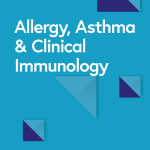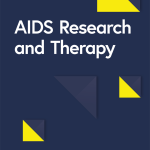Numerous clinical characteristics of COVID-19 are present, ranging from asymptomatic or mild to severe or serious form [16].
This is the first study that investigated the relationship between the polymorphisms rs2070744 and rs1799983 of the NOS3 gene and avascular necrosis complications in COVID-19 patients.
In this study, we reported that respiratory rate is often increased in patients diagnosed with COVID-19 when compared with healthy controls. This is comparable to other studies showing a higher respiratory rate in patients with COVID-19 [17, 18].
Compared to uninfected or healthy controls, an increase in heart rate was observed in individuals with COVID-19. On the other hand, consistent differences between the non-avascular necrosis and post-COVID-19 avascular necrosis groups were not observed. These findings come in agreement with the study of Maloberti et al., 2021 [19]. OS showed a significant difference with post-COVID-19 avascular necrosis COVID-19 in comparison with non-avascular necrosis and healthy groups.
Patients with COVID-19 pneumonia may have normal, low, or high leukocyte count. This might also make it easier to monitor the disease’s development and facilitate treatment-related decisions. Our data investigated that WBC and PLT counts were statistically significantly lower in the non-avascular necrosis and post-COVID-19 avascular necrosis groups than in the healthy group. These findings come in agreement with the study of Xiong et al., 2020 and Zheng et al., 2020 [20, 21].
In regard to the findings of the previous studies, IL-6 has been introduced as a catalyst for the cytokine storm in COVID-19 and is a powerful pro-inflammatory cytokine that can stimulate CRP. This hyperinflammatory condition raises CRP and IL-6 levels, which is consistent with the findings of previous studies. Interleukin-6, interleukin-10 (IL-10) and CRP are substantially linked with the severity of the illness, according to study results by Keddie et al. [22, 23].
Our study found that mean D-dimmer and S-ferritin levels were statistically significantly higher in the positive COVID-19 groups than in the negative group, which agrees with studies of Alkan et al., 2021 and Assar et al., 2023 [24, 25].
NO has a crucial role in preventing RNA and DNA viruses from replicating. NO declines with age and has a potentially fatal effect on COVID-19 infection in older adults, while it is also regarded as a crucial protective component [26]. In our study, there was no significant difference found between healthy and COVID-19 groups according to NOS3-rs2070744 polymorphism in neither genotype nor allele distribution. Even so, the genotype and allele distribution of the NOS3-rs1799983 polymorphism were observed to be statistically significantly different. The TG genotype and the G allele were higher in post COVID-19 avascular necrosis group, while the T allele was higher in healthy controls, while another study reported that there was no significant difference found between COVID-19 and healthy controls [27].
When comparing rs1799983 with different parameters, we observed that WBC and PLT counts in post post-COVID-19 avascular necrosis group were statistically significant differences.
About rs2070744, we noticed that heart rate and Hb were statistically significant differences in both non-avascular necrosis and post-COVID-19 avascular necrosis groups. Systolic, diastolic blood pressure and PLT count were statistically significant differences in the non-avascular necrosis group. In post COVID-19 avascular necrosis group, Age, temperature, OS, WBC count, lymphocyte count, D-dimer and CRP were statistically significant differences.
Long COVID is a complicated, multifactorial condition that has been demonstrated to affect almost all organ systems, including inducing a severe prothrombotic state in both the microvascular and macrovascular levels [28]. There are very few case reports of femoral AVN following a COVID-19 infection [29].
Our study showed that genotypes of the polymorphisms 1,799,983 in post-COVID-19 avascular necrosis had no significant association with the susceptibility of AVN, in agreement with the study of Zhao et al.,2019 showed the association of NOS3 rs1799983 polymorphism with osteonecrosis of the femoral head (ONFH) and in Chinese Han population, its T allele may be a protective factor against ONFH occurrence [30]. On the other hand, genotypes of the polymorphism rs2070744 had a significant association with avascular necrosis complications.
Patients, after being treated for COVID-19 infection, developed AVN of the femoral head, according to the study of Agarwala, S.R. et al., 2021 [31]. The hypothesis that the use of corticosteroids with COVID-19 raises the risk of AVN while lowering the onset of COVID-19-related respiratory symptoms is supported by a number of case studies. The case study of Kingma T.J. et al., 2022 showed that Long COVID is a complex condition which has contributed to the development of bilateral hip AVN in COVID-19 patients as COVID-19 affect intravascular blood flow causing a hypercoagulable state. In order to prevent catastrophic outcomes like bone collapsing, AVN must be examined early when evaluating anterior hip pain in individuals with a history of COVID-19 infection [32]. Bone loses its smooth shape as a result of AVN, which may cause severe arthritis. Also, other studies evaluated the relationship between AVN and COVID-19 [33].






Add Comment